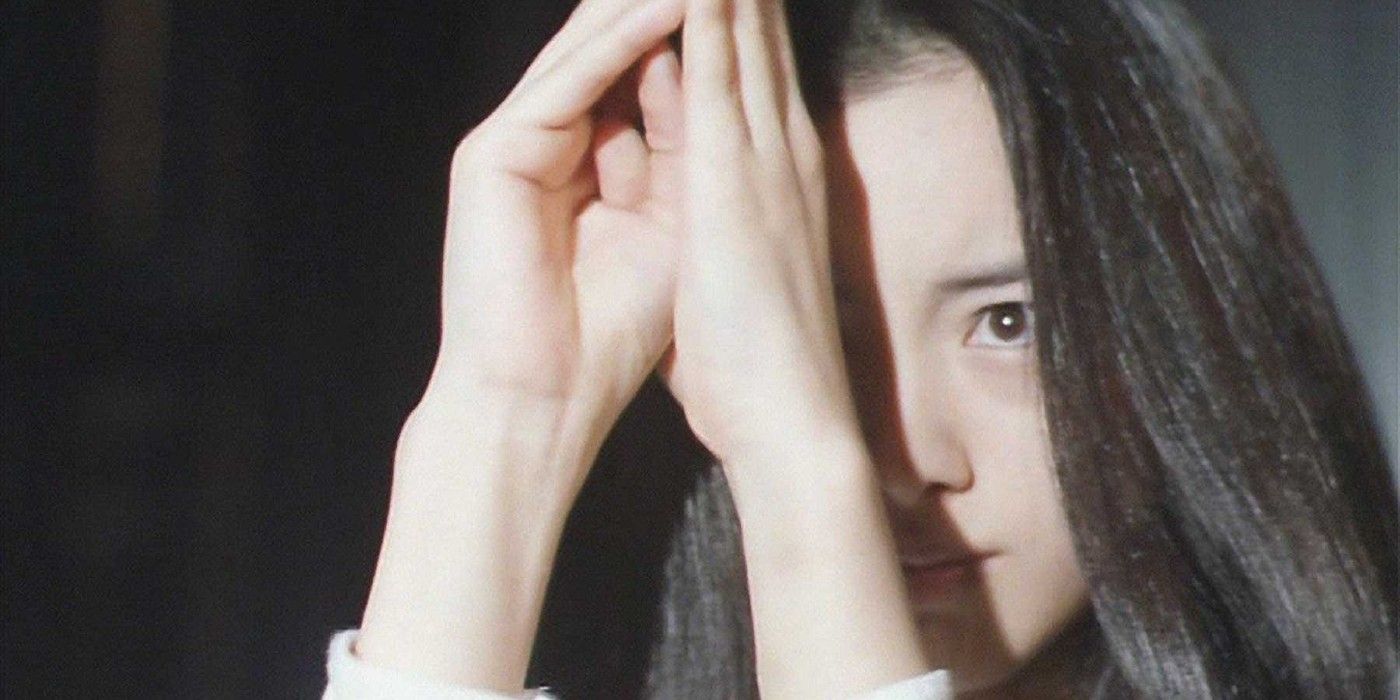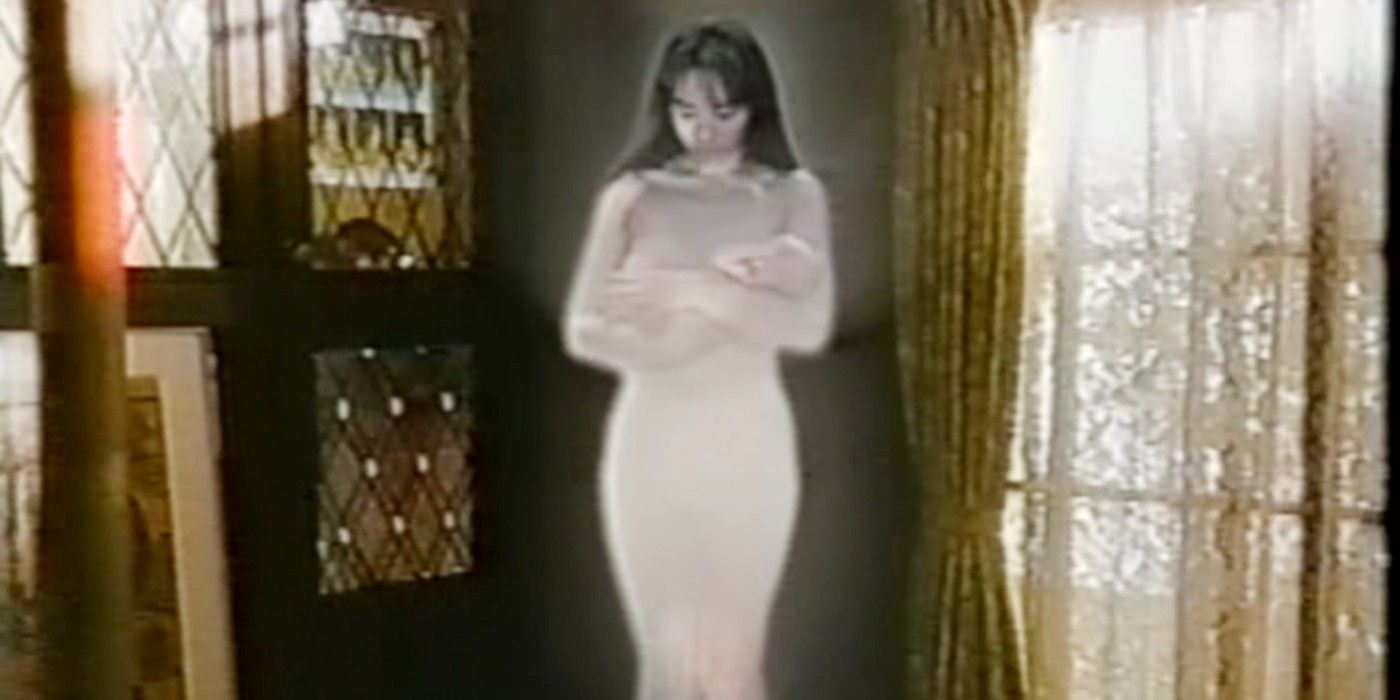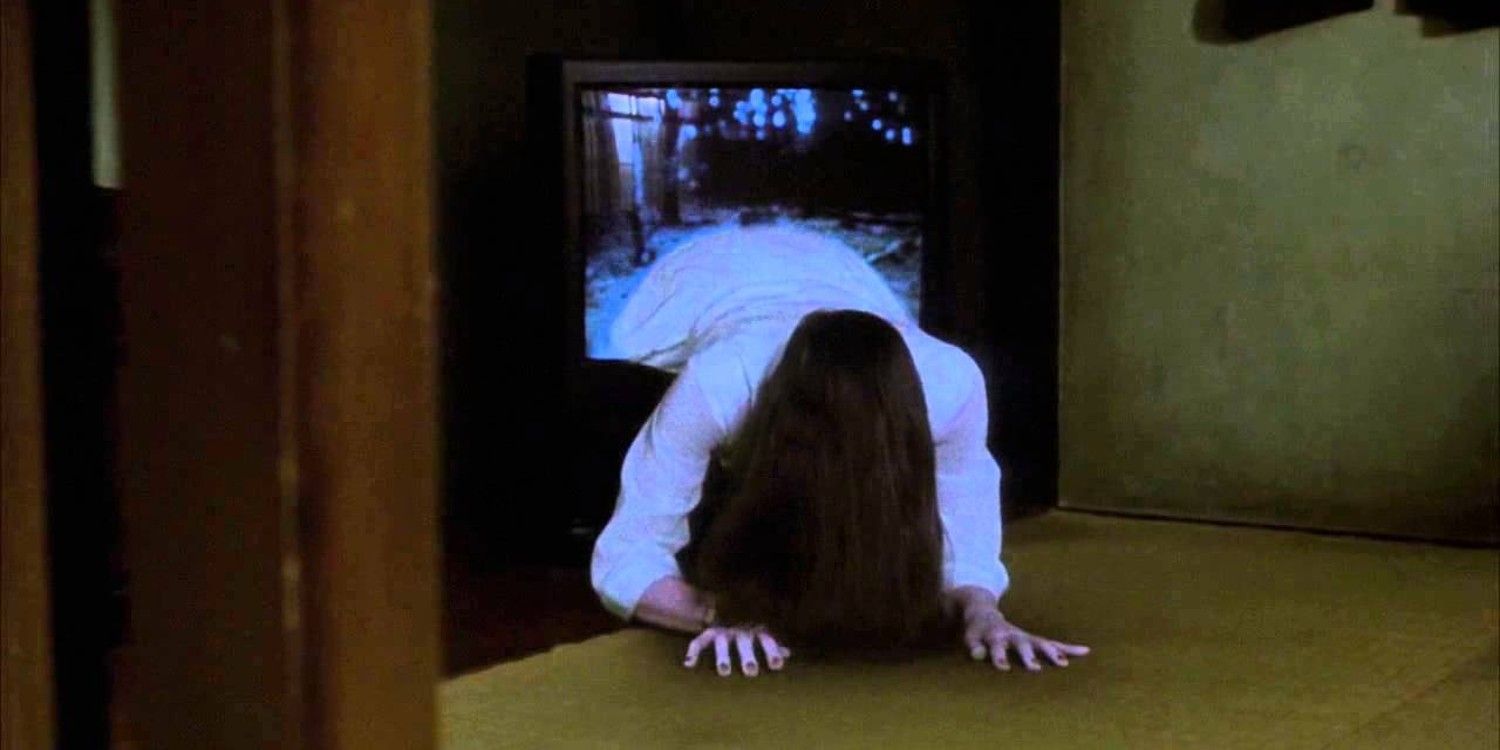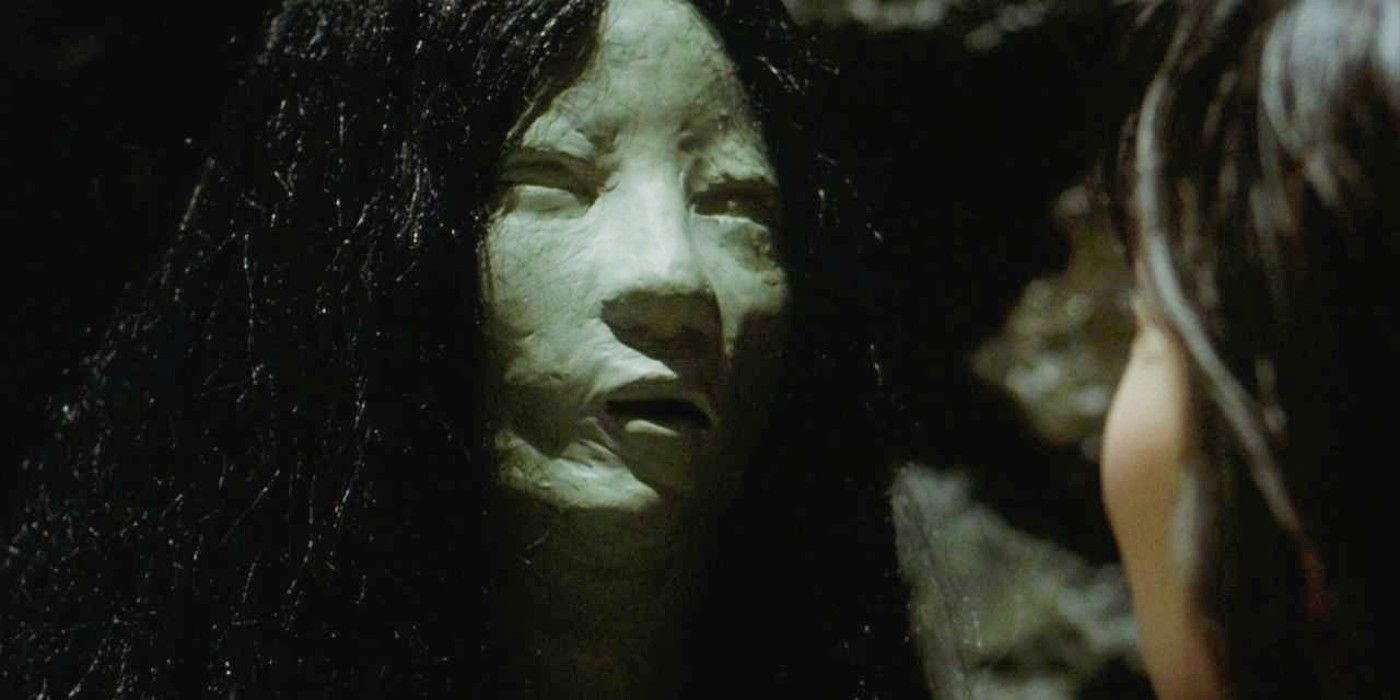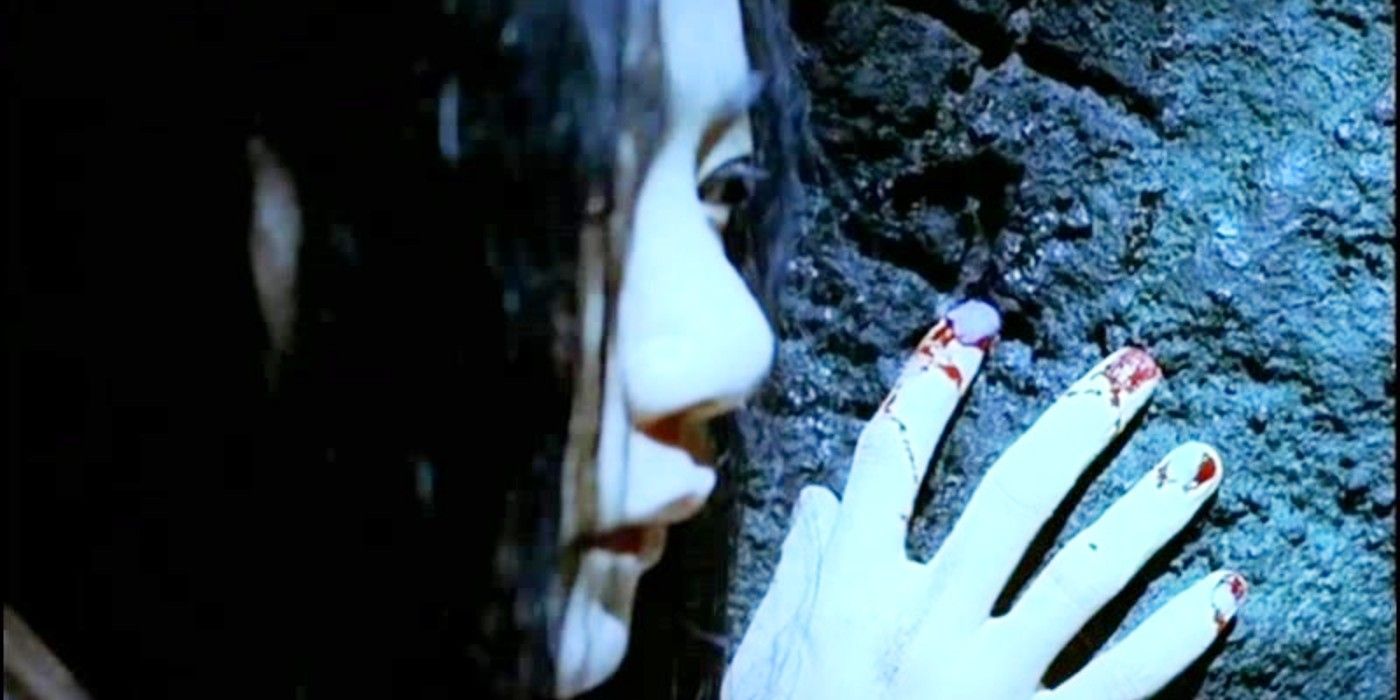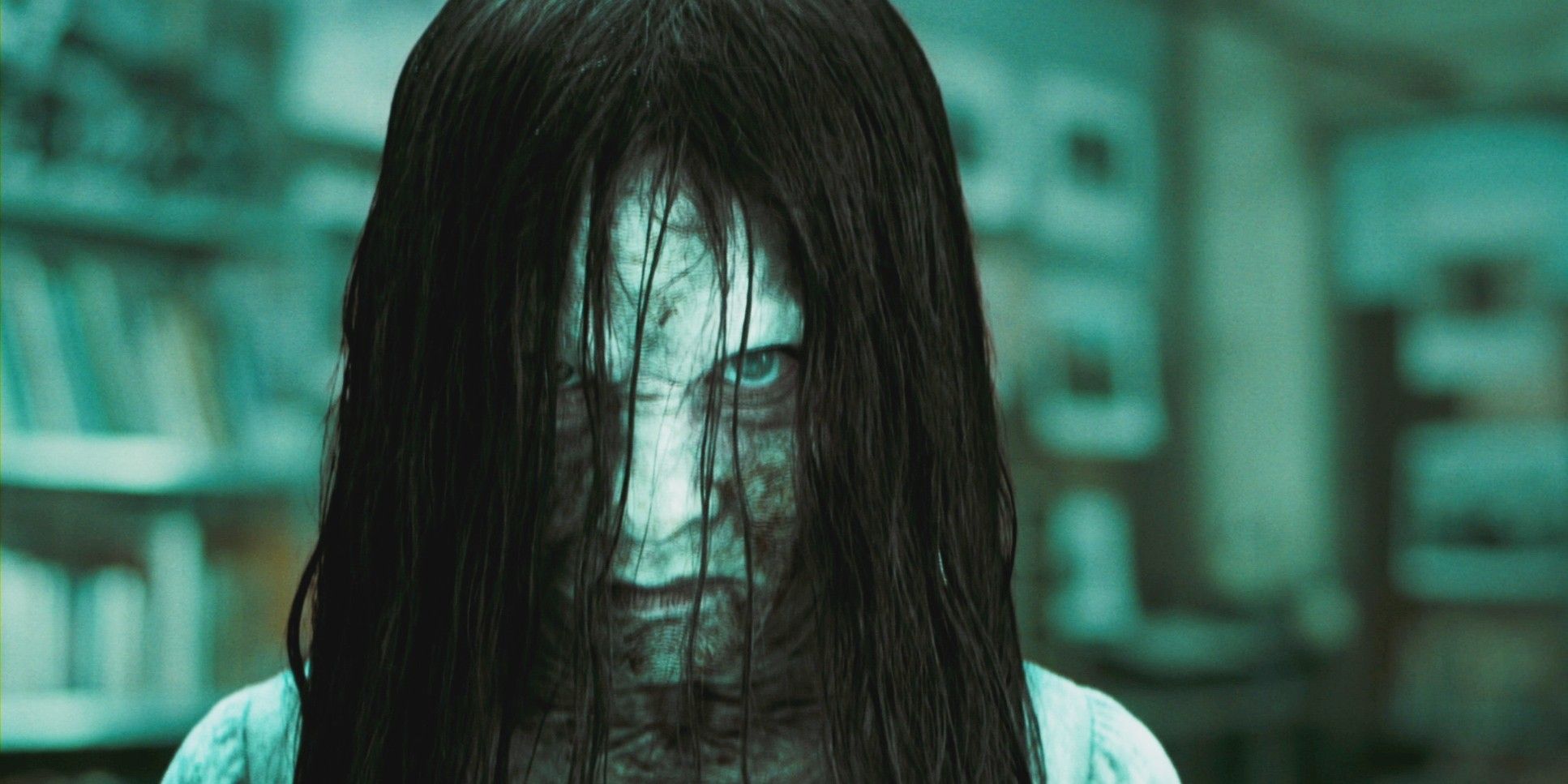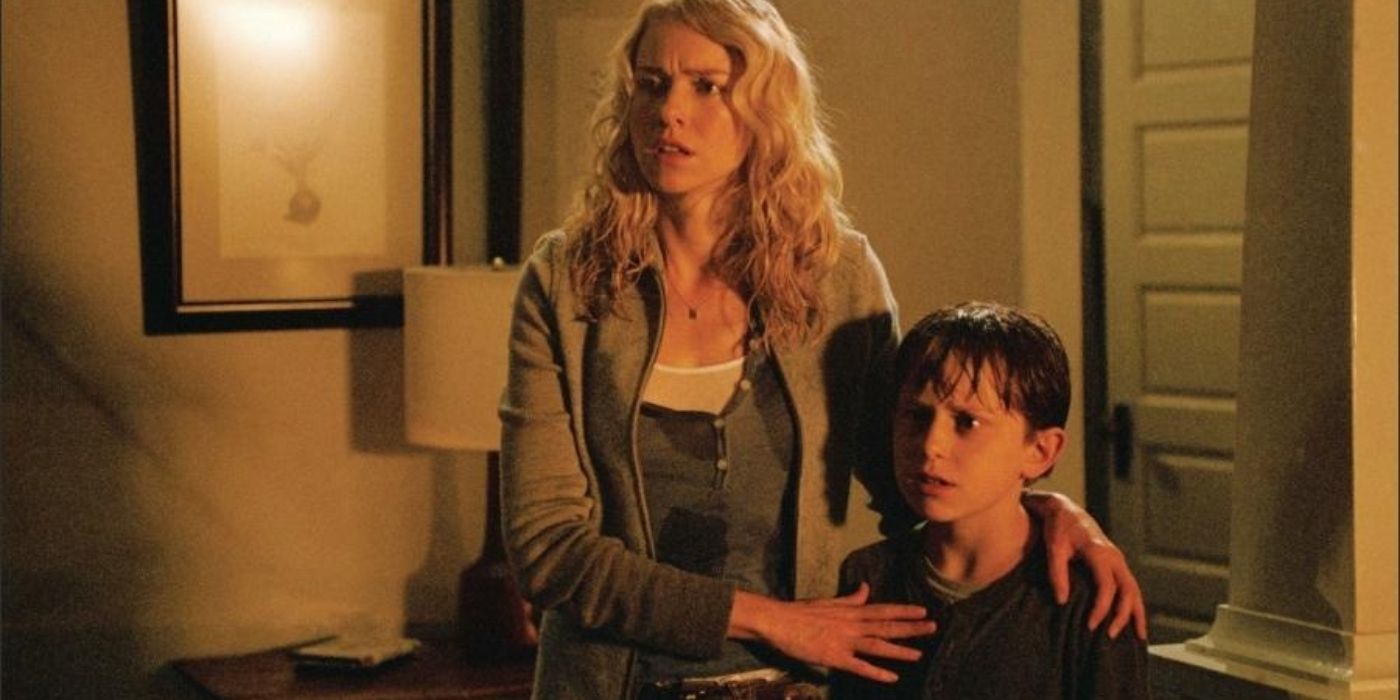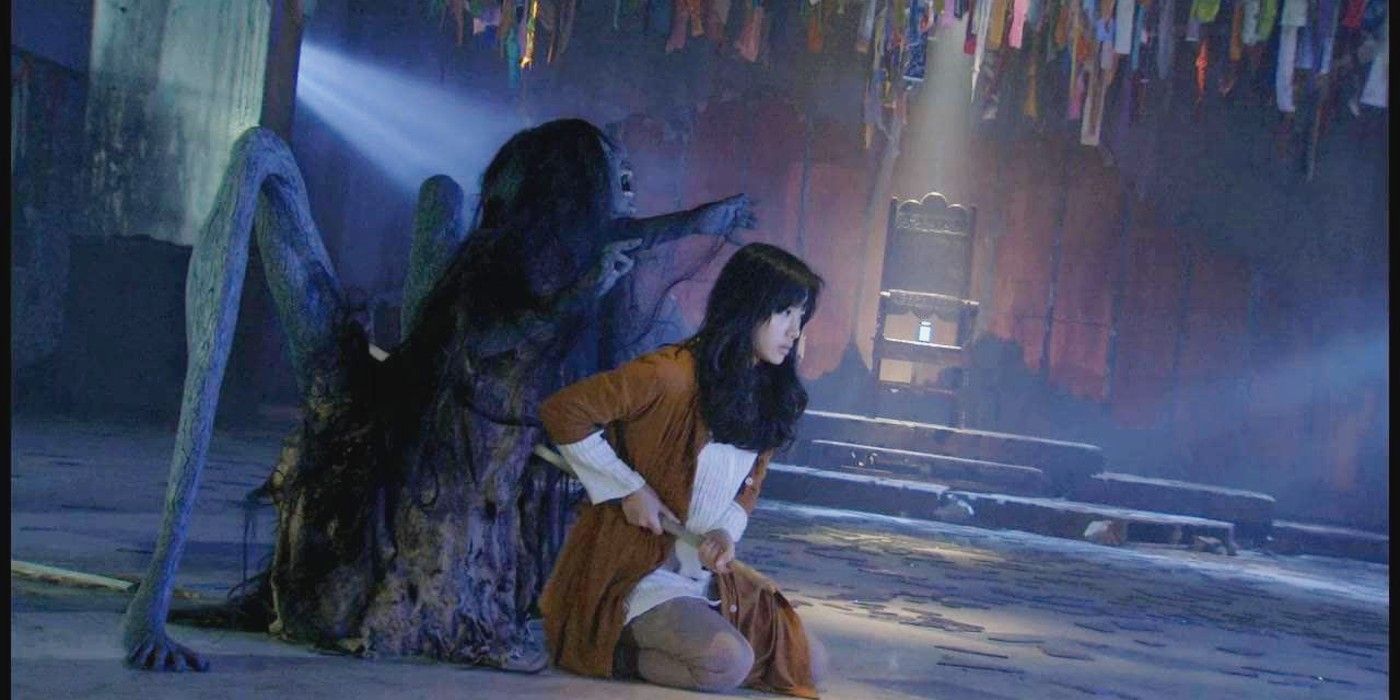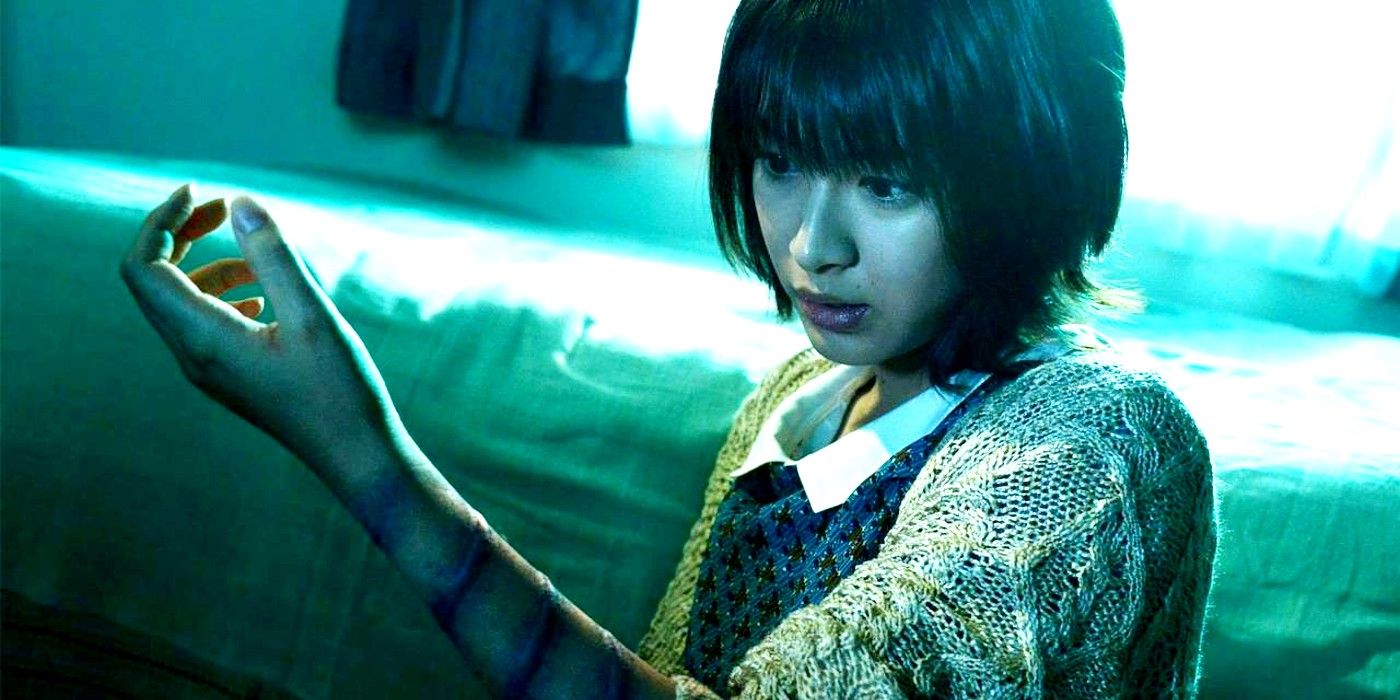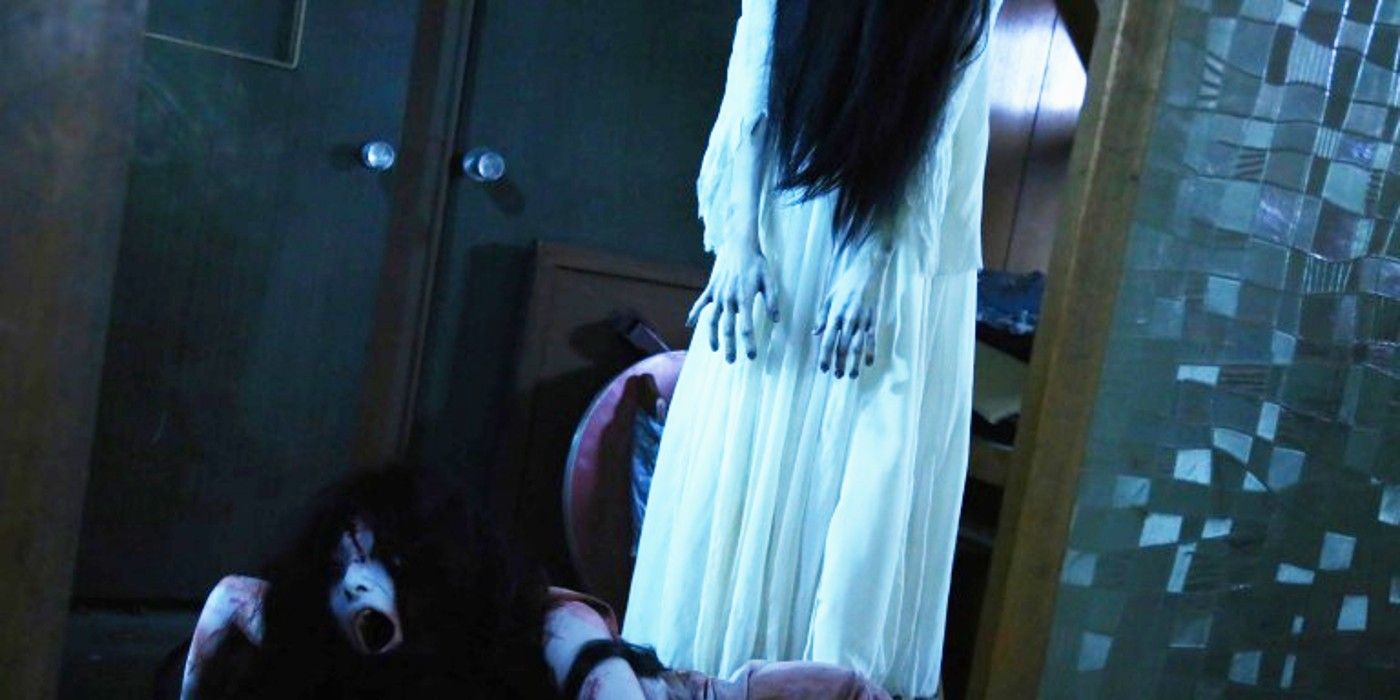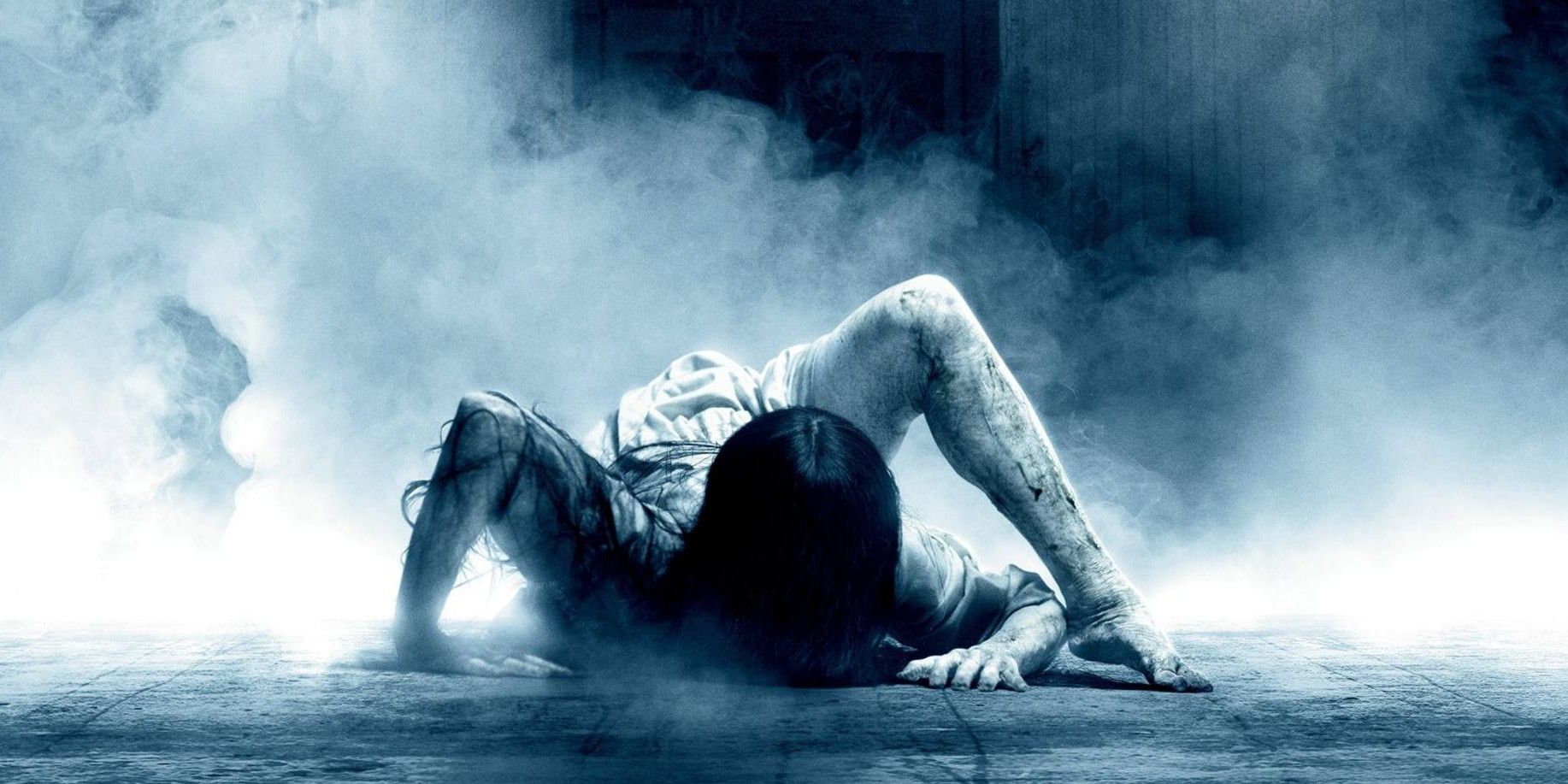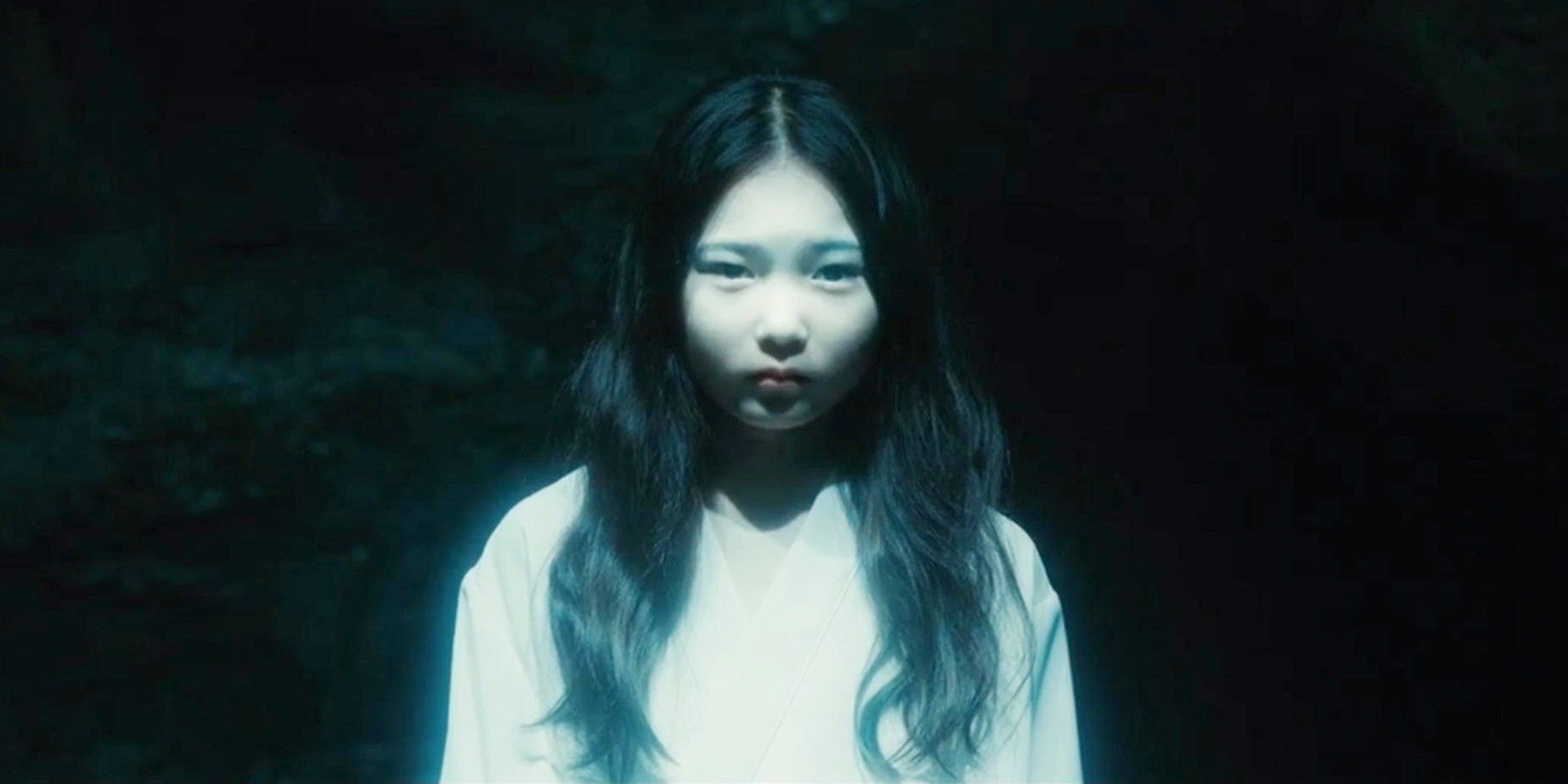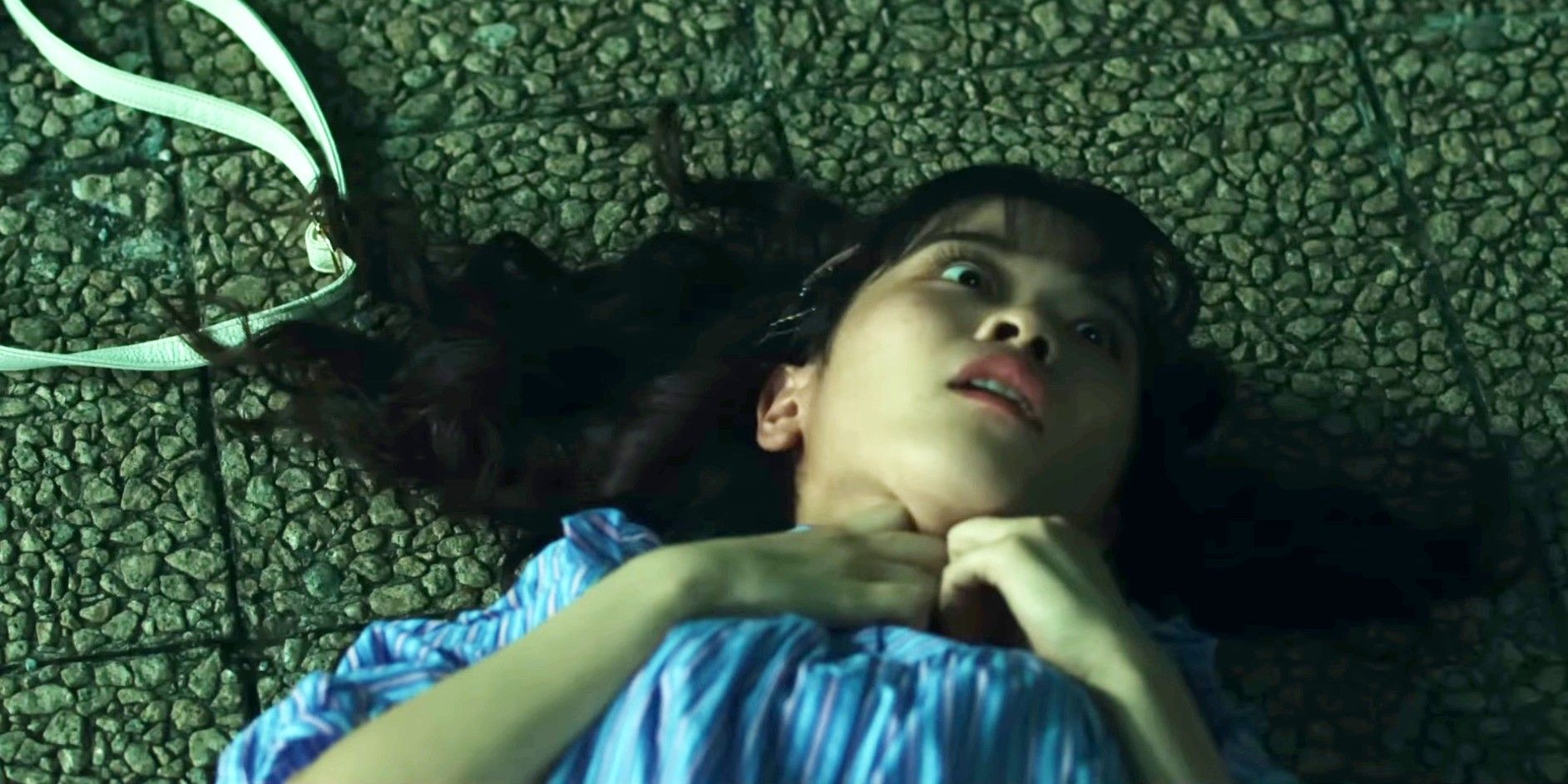Summary
-
The Ring
franchise, which includes 14 films, began with the 1995 TV film
Ringu
, and its popularity has influenced the horror genre. - The franchise offers two different ways to watch the films: in order of release date or in chronological order of events.
- Each film in the franchise contributes to the overarching storyline and expands on the lore of the curse, introducing new characters and plot twists.
The critically acclaimed horror franchise The Ring movies, in order, consists of several timelines, remakes, and sequels, making it hard to keep track of its fourteen films’ order by release date and chronology. While there have been several remakes of the franchise, The Ring movies’ popularity began with its 1998 feature-length film Ringu. The film became a pioneer for the J-horror genre and earned worldwide critical acclaim thanks to its achievements in visuals, sound design, and cinematography. The Ring’s chilling supernatural tale has become a major influence on the horror genre.
While it all started with the book by Koji Suzuki, The Ring’s chilling story about a mysterious girl who kills characters after watching a cursed tape has inspired countless nightmares and revamps, constantly introducing audiences to characters, storylines, and universes that can be hard to keep up with. When navigating the franchise, the most common ways to watch The Ring movies are in order of release date or chronology of events, which provide two very different sequences.
The Ring Movies In Release Order
The Franchise Includes 15 Movies From 1995 To 2022
The Ring franchise officially began with the 1995 film Ringu. The first of The Ring movies based on the 1991 book written by Koji Suzuki, Ringu was a straight-to-TV film released exclusively in Japan.Ringu was a hit with Japanese audiences, so much so that it was recreated as a feature-length film three years later. The introduction of 1998’s Ringu reset the movie’s timeline, which has since expanded ten-fold.
Throughout its 27-year run, The Ring franchise has expanded to new mediums, birthing timelines, spin-offs, and international remakes, including 2002’s The Ringstarring horror icon Naomi Watts. So far, 14 The Ring movies have been released between 1995 and 2022. It all started off in Japan with the original horror movie and then moved to the United States remake, which was one of the best American females of a J-horror movie. After this, there were even spin-offs crossing over with The Grudge and movies specifically about Sadako herself.
|
Movie Title |
Year Of Release |
|---|---|
|
Ringu |
1995 |
|
Ringu |
1998 |
|
Rasen |
1998 |
|
Ringu 2 |
1999 |
|
Ring Virus |
1999 |
|
Rong 0: Birthday |
2000 |
|
The Ring |
2002 |
|
The Ring Two |
2005 |
|
Sadako 3D |
2012 |
|
Sadako 3D 2 |
2013 |
|
Sadako Vs. Kayako |
2016 |
|
Rings |
2017 |
|
Sadako |
2019 |
|
Sadako DX |
2022 |
The Ring Movies In Chronological Order Of Events
Ring 0: Birthday (2000)
The first movie in The Ring’s timeline is the 2000 prequel Ring 0: Birthday. The film depicts the backstory of the vengeful Sadako Yamamura, providing context into her character and the events that led to her becoming the urban legend she later became. Set between the late 1950s and early 1960s, Ring 0: Birthday explores Sadako’s struggles with her psychic powers and her complicated relationship with her father. As the film progresses, it sets up the supernatural events that become the foundation for Sadako’s curse and the cursed videotape in the Ringu series.
Ring 0: Birthday
explores Sadako’s struggles with her psychic powers and her complicated relationship with her father.
Ring 0: Birthday is partially based on the short story Lemon Heart by Koji Suzuki. The movie received mostly bad reviews when released, although it sits at a relatively positive 62% rating on Rotten Tomatoes. It also was nominated for Fantasporto in 2001, but it lost out to Alejandro González Iñárritu’s breakout movie, Amores perros.
Ringu
Released In 1995
Chronologically, the next events in the franchise occur in the 1995 Japanese TV film Ringu. Set 30 years after Ring 0: Birthday, Ringu was the first-ever adaptation of the novel and is considered a stand-alone film. The story begins in Tokyo when a journalist becomes intrigued by a series of mysterious deaths occurring at an inn that have all been linked to a cursed videotape. After watching the tape, reporter Kazuyuki Asakawa becomes a victim of the curse and undergoes a quest to reverse it before his seven-day timeline runs out.
The most accurate movie when it comes to adapting the Koji Suzuki novel that the story is based on.
The film marks the first introduction of the seven-day curse and the rule of copying the tape to break the curse. While it is nowhere near as popular as the Ringu and The Ring movie series, this is actually the most accurate movie when it comes to adapting the Koji Suzuki novel that the story is based on. This movie was only released in Japan and is not available on home video.
Ringu
Released In 1998
Following the TV film in the timeline is 1998’s feature-length movie Ringu. Ringu follows Reiko Asakawa, a journalist actively investigating rumors of a cursed videotape. While investigating a series of murders, Reiko watches the tape and becomes the next victim of the curse. After the curse affects her son Yoichi, Reiko and her ex-husband embark on a quest to uncover the origins of the curse and find a way to break it before the seven-day deadline, which would claim the lives of herself and her son.
Ringu
takes the premise of the original 1995 film and gives it a cinematic facelift.
Ringu takes the premise of the original 1995 film and gives it a cinematic facelift, with visible upgrades to the visuals, plot, and characters that helped it become one of the most ground-breaking films of the J-horror genre. In addition to being a pioneer of horror, Ringu is credited with a lot of firsts for The Ring franchise. Ringu marks the directorial debut of J-horror legend Hideo Nakata in the franchise and the first time Sadako is shown on screen crawling out of a TV.
Rasen
Released In 1998
Immediately following Ringu (the sequel was released the same day) is 1998’s Rasen, or Spiral, as it’s known in the US. As the first official sequel to Ringu, Rasen is based on the Koji Suzuki novel of the same name. It follows a pathologist named Dr. Mitsuo Ando, who becomes involved in a series of mysterious deaths after he discovers that one of the deceased individuals has a connection to the same cursed videotape from Ringu.
Rasen’s
complexity and convoluted plot resulted in its poor critical reception, which inspired a reboot of
The Ring’s
timeline.
After being affected by it, Dr. Ando must race against time to unravel the secrets behind the curse and the medical conspiracies rumored to be linked to it. Rasen’s complexity and convoluted plot resulted in its poor critical reception, which inspired a reboot of The Ring’s timeline. Although it wasn’t considered canonical for years, the subsequent sequels throughout the 2000s reintroduced Rasen to The Ring’s timeline.
Ringu 2
Released In 1999
Completely disregarding Rasen, 1999’s Ringu 2 reboots The Ring’s timeline. The film goes back to the events immediately following 1998’s Ringu, reintroducing characters like Reiko and Yoichi to the story. Ringu 2 puts Mai Takano in the forefront as Reiko still grapples with the effects of the curse. While Yoichi begins exhibiting signs of paranormal abilities, Sadako’s supernatural powers grow out of control, pushing Mai to uncover the secrets behind the curse and save Yoichi from its influence.
Ringu 2
was the first movie that was not based on Suzuki’s novels and stories and was instead an original tale based simply on his characters.
The reason that the franchise started over fresh was because the Rasen reviews were so bad. The restart of the franchise also caused one other major change, as Ringu 2 was the first movie that was not based on Suzuki’s novels and stories and was instead an original tale based simply on his characters. Thanks to the changes, it ended up as a huge success, and was the second-highest-grossing movie in Japan in 1999, following only Pokemon: The Movie 2000. While critical reviews were also terrible, the box office made it a success for the studio.
The Ring Virus
Released In 1999
The Ring Virus enters the franchise as The Ring’s first international remake. Set in South Korea, the film follows the same formula as Ringu, replacing Sadako Yamamura with Park Eun Suh. The Ring Virus follows journalist Sun-Joo as she investigates a series of mysterious deaths, all linked to the viewing of a cursed videotape. The Ring Virus is a reimagining of The Ring’s source material and is not considered canonical to the rest of the franchise.
The movie still received poor critical reviews.
The reason that Ringu was remade in Korea was that South Korea banned all Japanese cultural imports to the country at the time, including movies (via Variety). As a result, the co-commissioned movie started production and brought it to the huge movie market anyway. The movie still received poor critical reviews, but its 37% Rotten Tomatoes score was still higher than the previous two Japanese movies, Rasen and Ringu 2. However, there was never a sequel to this release.
The Ring
Released In 2002
The next movie in the timeline is the critically acclaimed American horror remake, The Ring (2002). Set sometime between 2002 and 2005, the U.S. version of The Ring follows Rachel Keller, a journalist investigating a videotape that’s been linked to the sudden death of a group of teens. The tape is rumored to be the source of an urban legend in which the viewer will die seven days after watching it. After watching the tape, Rachel has to work quickly to save her life and that of her son Aidan.
The Ring
helped unlock the door for America to start remaking the ghostly Japanese horror movies, with
The Grudge
and
Dark Water
following
The film expands on The Ring’s ever-evolving mythos, introducing several new key characters to the timeline, including Aidan and the story’s new eerie figure Samara. The Ring helped unlock the door for America to start remaking the ghostly Japanese horror movies, with The Grudge and Dark Water following, although neither of those movies matched the overwhelming success of the Westernized adaptation of Ringu.
The Ring Two
Released In 2005
Six months after the events of The Ring comes its 2005 American sequel, The Ring Two. The Ring Two reintroduces director Hideo Nakata to the franchise and finds Rachel and her son Aidan trying to escape the horrors of the cursed tape in their new hometown of Astoria, Oregon. Their peace is short-lived, as the evil spirit of Samara begins to haunt Aidan once again. As Samara desperately tries to possess Aidan’s body, Rachel once again has to confront the terrifying curse and save her son.
One wonders what the sequel might have looked like if Verbinksi had returned to the franchise to complete his story.
Unlike the first American remake of The Ring, the sequel was met with mostly negative critical reviews. Gore Verbinski, who directed The Ring, left the franchise due to creative differences, which is what brought Nakata to the project, and one wonders what the sequel might have looked like if Verbinksi had returned to the franchise to complete his story. The Ring 2 opened with a bigger box office than the original, but it fell off after that and ended up making much less money overall, with only $164 million compared to the $249.3 million The Ring made (via Box Office Mojo).
Sadako 3D
Released In 2012
Loosely inspired by Koji Suzuku’s S, Sadako 3D jumps into The Ring franchise as a sequel to 1998’s Rasen. Set in 2012, Sadako 3D takes the supernatural curse from VHS to digital as Sadako begins terrorizing people across the internet. The catch is, instead of viewers of the haunted footage being killed by a ghost, the curse forces people to die by suicide. In addition to expanding on the lore of the curse, Sadako 3D gives The Ring a modern-day facelift, incorporating the internet and digital technology into its iconic supernatural story.
This movie was based on his novel
S
, which takes place 25 years after the events of
Spira.
This Japanese Ring movie chose to go back on the original story idea from Ringu 2 and once again based its story on one by Koji Suzuki. This movie was based on his novel S, which takes place 25 years after the events of Spiral (the second book in his Ring series of novels). The novel and movie came out in th same year, showing that Suzuki and the studio were working hand in hand during this time. The movie let down many fans of the original Japanese Ring movies, as it only has an audience score of 16% on Rotten Tomatoes.
Sadako 3D 2
Released In 2013
Set five years after Sadako 3D, the 2013 movie Sadako 3D 2 enters The Ring’s timeline as a continuation of the Rasen storyline. Sadako 3D 2 further explores the evolution of Sadako’s curse in the digital era, providing new perspectives on her origins and motivations. The film entangles a new group of characters in its supernatural world, including a university professor, a detective, and a young woman with supernatural abilities. Together, they uncover the secrets of Sadako’s curse and find a way to put her spirit to rest.
Despite the trilogy tease though,
Sadako 3D 2
completely failed to find its audience.
The movie also hints that the spirit of Sadako lives on in a new young child, and the horrors will continue. Despite the trilogy tease though, Sadako 3D 2 completely failed to find its audience. The audience score on Rotten Tomatoes for Sadako 3D 2 is an extremely low 6%, as many fans called it a disappointing followup to an already below-average relaunch of The Ring franchise. Thanks to the poor reception, this ended this Sadako version of The Ring movies, in order, for nine years before the studio tried to resurrect it.
Sadako vs Kayako
Released In 2016
The timeline in The Ring takes a detour with the introduction of 2016’s J-horror crossover Sadako vs Kayako. As a standalone film, Sadako vs Kayako opens the door to another timeline where J-horror classics The Ring and The Grudge co-exist. What started off as an April Fool’s gag was brought to life due to its high demand (via Anime News Network), depicting a supernatural face-off against J-horror icons Sadako and Kayako, resulting in a mash-up of sinister proportions.
Sadako vs. Kayako
was a love letter to fans meant to entertain with plenty of in-jokes.
In much the same manner as Freddy Vs. Jason, which added in touches for fans of both A Nightmare on Elm Street and Friday the 13th movie franchises, the big test with this movie was to please fans of both The Ring and The Grudge franchises. Since the entire purpose of the movie was not to scare, like the original films in each series, Sadako vs. Kayako was a love letter to fans meant to entertain with plenty of in-jokes.
It succeeded to an extent, as its 48% rating on Rotten Tomatoes was better than later sequels in both franchises.
Rings
Released In 2017
Next in the timeline is the third installment to the American remake, 2017’s Rings. Rings takes the story to 2015, where a girl named Julia begins investigating a mysterious tape that has been influencing her boyfriend Holt’s distant behavior. As Julia dives deeper, she discovers the existence of a “movie within a movie,” an additional cursed video that gives viewers seven days to pass it along to avoid death. Julia and Holt race to uncover the origins of this new curse, which has been linked to Samara’s past, quickly realizing that Samara’s powers extend beyond the cursed videotape.
Rings
was nowhere near as successful as either of the other American
Ring
movies, only making $83.1 million at the box-office.
It had been 12 years since The Ring Two, and Rings was meant to re-launch the American version of the franchise. The studio also made the smart decision to return to Koji Suzuki’s novels, as this movie adapted his actual Ring sequel novel, Spiral. However, Rings was nowhere near as successful as either of the other American Ring movies, only making $83.1 million at the box-office, although that was a minor success based on its $25 million budget. It also received mostly negative reviews and that ended the American version’s relaunch.
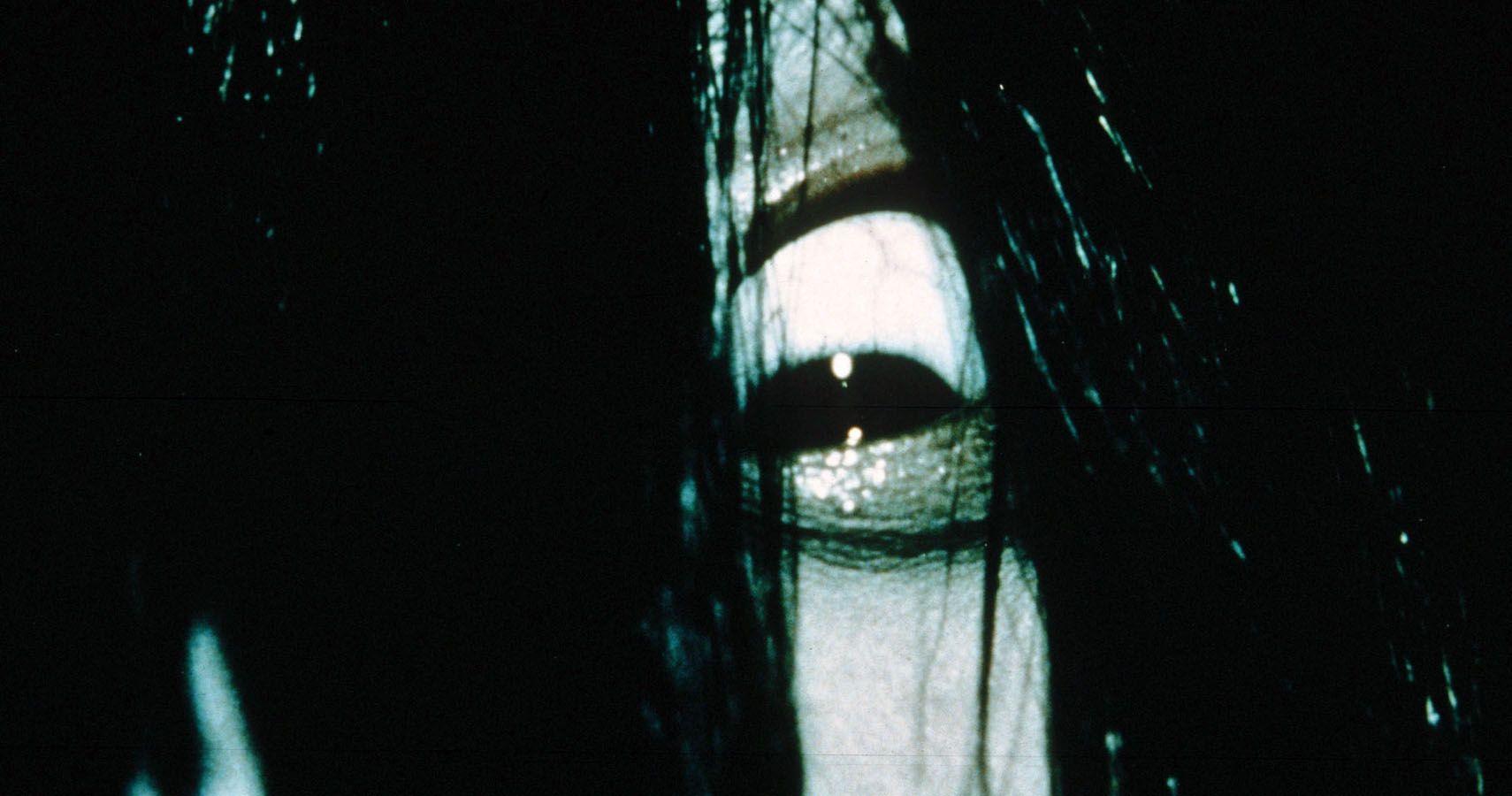
Related
The 15 Best Asian Horror Movies
Horror is a universal language, and some of the scariest movies are the ones made by Asian filmmakers. These are the best of them.
Sadako
Released in 2019
Based on Koji Suzuki’s Tide, Sadako is the next entry in The Ring franchise and is considered a direct sequel to Ringu 2. Helmed by the great Hideo Nakata, Sadako’s upgraded visuals introduce a refreshing contemporary look to the franchise. It follows psychologist Mayu Akikawa, who discovers that the legendary cursed video has resurfaced, and is spreading a new wave of fear and death throughout Japan. Sadako evolves the lore of Ringu, introducing a reincarnated version of Sadako while exploring the curse’s adaptation into the digital age.
The studio also went all out on the promotions, licensing a manga tie-in series to go along with this release.
While it shares a similar name to the precious Sadako movies, this ignored both of them and took the franchise back to the start, allowing a new sequel to Ringu 2, making it the official third movie in that timeline. The studio also went all out on the promotions, licensing a manga tie-in series to go along with this release. The movie received mostly poor critical reviews, as did most of the series, but it showed that the studio at least wanted to modernize the classic ghostly tale for a new generation, even though it hadn’t reached that level yet.
Sadako DX
Released In 2022
The last entry of The Ring’s franchise is 2022’s Sadako DX. Continuing Rasen’s storyline, Sadako DX is considered a sequel to 2013’s Sadako 3D 2, though it has little to do with the characters or plot. Sadako DX takes a break from its renowned supernatural horror and dives into its funny side, with over-the-top performances and parodies of Gen Z culture that make the movie unintentionally funny. In addition to its quirky new cast and tone, Sadako DX refreshes the rules of the curse, shortening the time span from 7 days to 24 hours.
With the comedy added to the story,
Sadako DX
really felt like something special.
Since Sadako didn’t reignite the franchise in 2019 as a sequel to Ringu 2, the studio went back to the Rasen timeline and tried again three years later. With the comedy added to the story, Sadako DX really felt like something special. What pulled it down somewhat was the lackluster effects work, as the humor was at the forefront, and it seemed the filmmakers let up a little on the gore and horror effects. Regardless, it received a mixed reception, and so far the timeline of The Ring movies stops here.
There Are Unofficial Ring Movies Too
There are 14 recognized movies in The Ring franchise when including the original Japanese films and Western remakes. However, there have also been several other projects that utilize the character of Sadako or take influence from Koji Suzuki’s original novel. Many of these are crossovers with various other franchises in a similar fashion to Sadako vs. Kayako. However, few have been made available for Western audiences, as they focus on characters or franchises that have little-to-no presence outside Eastern markets.
The most prominent of these is the trilogy of Bunshinsaba vs. Sadakao movies directed by River Huang, the Taiwanese director also known for his proficiency as an actor. The Bunshinsaba vs. Sadako movies see Sadako up against (or working alongside) the spirit known as Xiao Ai from the Chinese horror movie franchise Bunshinsaba.
Bunshinsaba has been adapted for several crossovers for the Chinese film market, including Sadako Wars: Bixian vs Kayako, which includes characters from Ju-On: The Grudge, and Bunshinsaba: Hoichi the Earless, which incorporates not only Sadako from The Ring but also Kayako from Ju-On and the Thai folklore figure Kuman Thong.
Additionally, there is also Sadako: Pendant of Mourning, which is due for release on Amazon Prime Video in 2024, and 2018’s The Return of Sadako, which is the first standalone Chinese remake of Ringu. Both movies take inspiration from the original novel, though have changed many details about Sadako as a character. Ultimately, the story of The Ring clearly strikes a horrifying note that resonates across many different cultures, and it’s intriguing to see where the franchise will go next.



